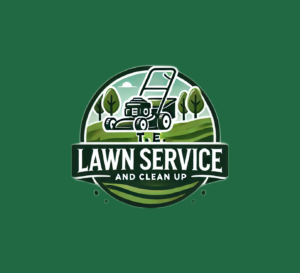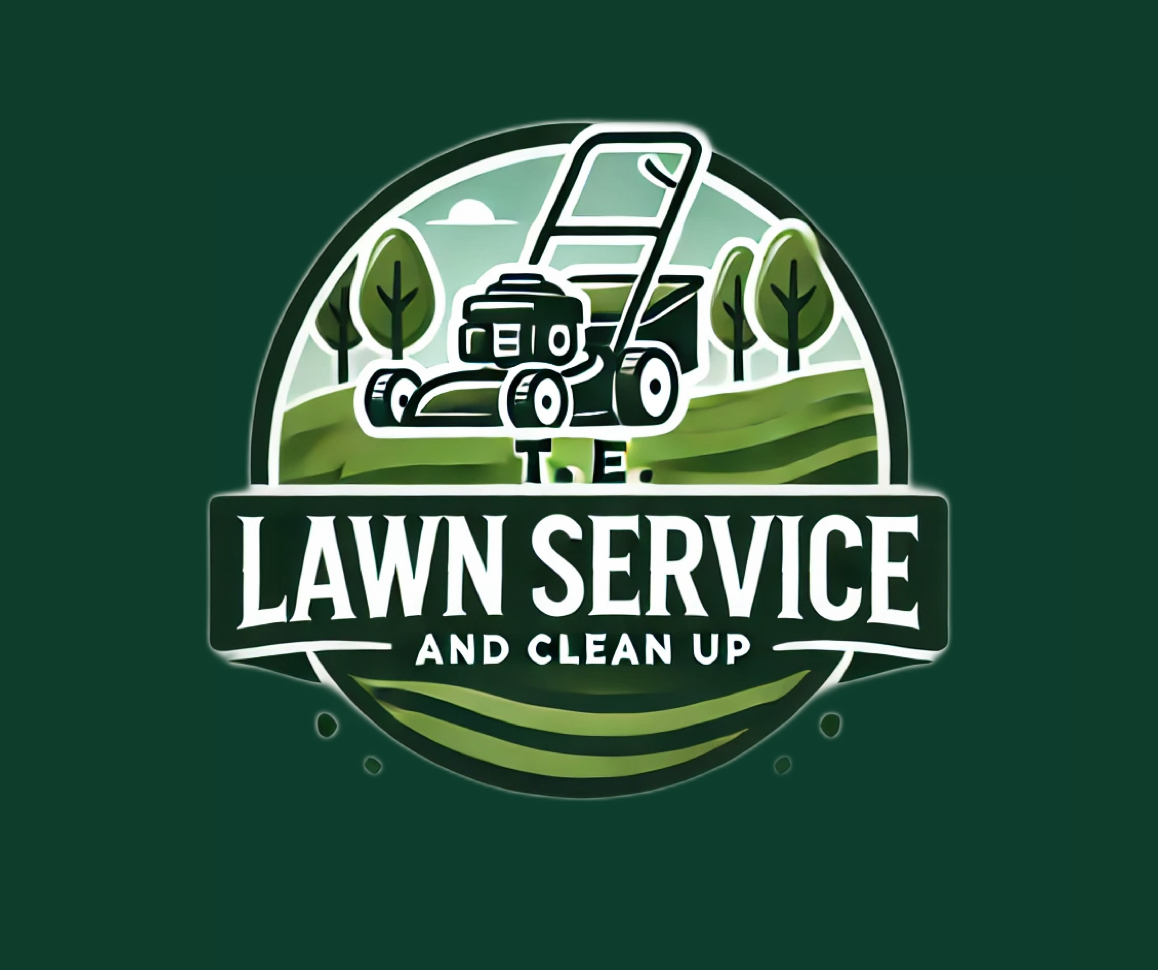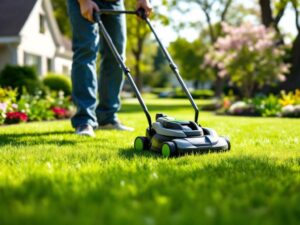A well-mowed lawn is the foundation of a beautiful yard. In Atlanta, where warm summers and mild winters create a unique growing environment, proper mowing practices can mean the difference between a patchy, weed-filled lawn and one that looks healthy and inviting year-round.
While mowing may seem as simple as pushing a mower across your yard, the truth is that technique, timing, and frequency all play critical roles in lawn health. At TE Lawn Service and Clean Up, we’ve seen firsthand how the right mowing practices transform Atlanta lawns. This guide will walk you through everything a homeowner needs to know about mowing correctly—and when to call in the professionals for help.
Why Proper Lawn Mowing Matters
Grass is a living plant. Every time you mow, you’re removing part of that plant’s food-producing system. Mowing incorrectly can stress the grass, leaving it vulnerable to weeds, drought, and pests. Mowing correctly, however, encourages thicker, healthier growth that resists damage and boosts curb appeal.
In Atlanta, common lawn grasses include:
- Bermuda grass – Fast-growing and durable in full sun.
- Zoysia grass – Soft, dense, and shade tolerant.
- Centipede grass – Low-maintenance but sensitive to stress.
- Tall Fescue – Cool-season grass that stays green year-round.
Each grass type requires a different mowing height and schedule, making local knowledge essential.
Step 1: Set the Right Mowing Height
Cutting grass too short—known as scalping—is one of the most damaging mistakes homeowners make. Scalping removes too much leaf surface, weakening the root system and allowing weeds to invade.
Here are the recommended mowing heights for Atlanta grasses:
- Bermuda: 1 to 2 inches
- Zoysia: 1.5 to 2.5 inches
- Centipede: 1.5 to 2 inches
- Tall Fescue: 3 to 4 inches
Pro Tip: Never cut more than one-third of the grass blade at a time. If your lawn is overgrown, mow in stages to avoid shocking the grass.
Step 2: Mow at the Right Frequency
Atlanta’s climate promotes fast grass growth, especially in spring and summer. Regular mowing keeps growth under control and promotes density.
- Spring and Summer: Mow once or twice a week, depending on growth rate.
- Fall: Mow every 7–10 days until growth slows.
- Winter: Dormant warm-season grasses like Bermuda and Zoysia need little to no mowing, while Fescue may still require occasional cuts.
Sticking to a schedule prevents overgrowth and reduces the risk of pests nesting in tall grass.
Step 3: Use Sharp Mower Blades
Dull mower blades tear grass instead of cutting it cleanly. This causes ragged edges that turn brown and make the lawn more susceptible to disease.
Homeowners should sharpen mower blades every 20–25 hours of mowing or at least once a season. TE Lawn Service maintains professional-grade equipment with sharp blades to guarantee clean cuts every time.
Step 4: Alternate Mowing Patterns
If you always mow in the same direction, grass blades lean one way, and the soil can become compacted. Changing your mowing pattern prevents ruts and promotes upright growth.
Try alternating directions each week:
- Week 1: North to South
- Week 2: East to West
- Week 3: Diagonal
This small change makes your lawn look more professional and healthier.
Step 5: Leave Grass Clippings When Possible
Many Atlanta homeowners bag their clippings, but mulching clippings back into the lawn actually improves soil health. Grass clippings break down quickly, returning valuable nitrogen and organic matter to the soil.
The key is mowing regularly so clippings are short and spread evenly. If clippings clump or cover the grass, rake them to avoid smothering the lawn.
Step 6: Time Your Mowing Correctly
Mowing at the wrong time of day can stress your lawn. The best time to mow is mid-morning (8–10 a.m.) or late afternoon (4–6 p.m.).
Avoid mowing during these times:
- Midday: The Atlanta sun is too intense and can cause heat stress.
- After rain: Wet grass clogs mowers, causes uneven cuts, and spreads fungal diseases.
Sticking to the right mowing window protects your grass and makes mowing easier.
Step 7: Handle Slopes and Shady Areas with Care
Atlanta yards often have sloped sections or shaded spots that require special mowing care.
- On slopes, mow side-to-side rather than up and down to prevent accidents.
- In shaded areas, mow grass slightly higher to help it compete for limited sunlight.
These small adjustments ensure all areas of your yard stay consistent and healthy.
Step 8: Pair Mowing with Other Lawn Care
Mowing alone won’t keep your lawn looking its best. Combine mowing with:
- Fertilization: Provides nutrients for strong growth.
- Weed control: Prevents invasive plants from stealing resources.
- Aeration: Relieves soil compaction for better root health.
- Watering: Deep, infrequent watering builds stronger roots.
TE Lawn Service offers complete lawn care packages that coordinate mowing with fertilization, aeration, and seasonal cleanups for maximum results.
Step 9: Adjust for Seasonal Changes in Atlanta
Atlanta’s weather shifts require adjustments in mowing practices throughout the year.
- Spring: Begin mowing as soon as grass starts growing. Scalping Bermuda and Zoysia once in early spring helps remove dormant growth.
- Summer: Increase mowing frequency as growth peaks, but avoid cutting too short during droughts.
- Fall: Raise mowing heights slightly to protect roots going into winter.
- Winter: Warm-season grasses go dormant; avoid mowing unless necessary. Fescue lawns remain active and should be mowed consistently.
Following a seasonal approach ensures your lawn adapts to Atlanta’s climate.
Step 10: Know When to Call a Professional
DIY mowing can work for many homeowners, but sometimes it pays to let professionals handle the job. If you have a large property, uneven terrain, or simply want guaranteed results, TE Lawn Service and Clean Up provides expert mowing services in Atlanta.
Benefits of professional mowing include:
- Perfectly timed schedules based on grass type and season.
- Commercial-grade equipment for consistent, clean cuts.
- Knowledge of local grasses and Atlanta weather patterns.
- Integration with fertilization, weed control, and yard cleanup.
Instead of spending weekends pushing a mower, homeowners can relax and enjoy their yard while professionals handle the work.
Conclusion
Mowing the lawn the right way in Atlanta involves more than just keeping the grass short. The right mowing height, timing, equipment, and seasonal adjustments all play a role in creating a healthy, green lawn.
By following this homeowner’s guide, you can improve your mowing technique and give your grass the care it needs to thrive. But if you’d prefer to save time and enjoy flawless results, TE Lawn Service and Clean Up is here to help. Our team offers professional mowing and complete lawn care services designed for Atlanta’s unique climate.
Contact TE Lawn Service today to schedule regular mowing and see the difference expert care can make for your lawn.




